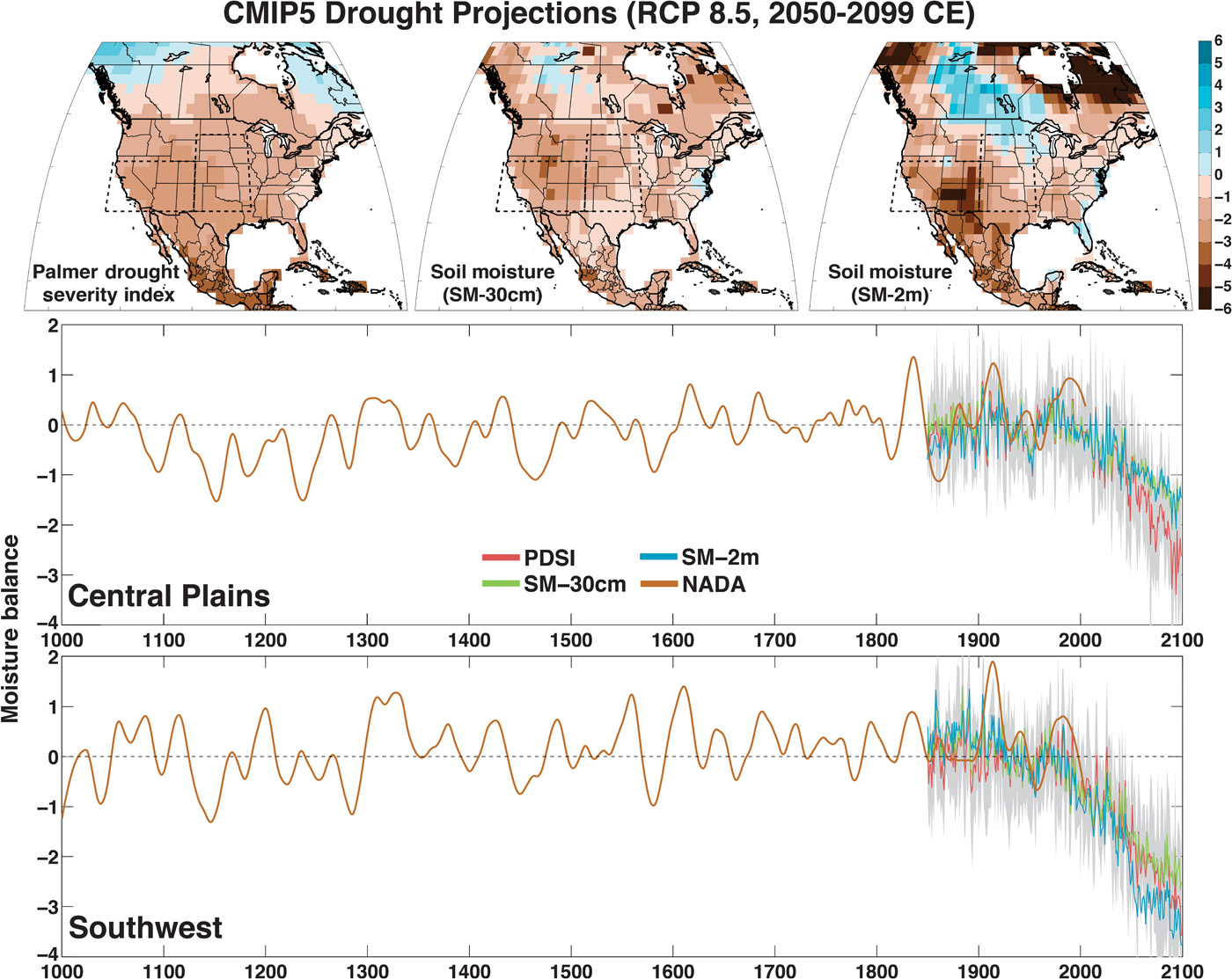Recently, I was contacted by David Perlman of the San Francisco Chronicle to comment on this paper:
http://advances.sciencemag.org/content/1/1/e1400082
The story he produced can be found here: http://www.sfgate.com/science/article/Megadroughts-predicted-to-ravage-the-Southwest-6078504.php
The email I sent to David Perlman in response to his query was:
This study analyzes results from a broad spectrum of climate models and compares them with paleo-climatic data and comes up with some rather startling results.
These model results are the most reliable model results available in the world today. The models have been tested again and again against a wide array of meteorological observations.
If this was one model saying this, it might be a model artifact, but when nearly every model says more-or-less the same thing, you have to pay attention and believe it might be pointing to something real.
I have looked at some of this model output before, but when you look at them as graphs of probability distribution functions it doesn’t really mean very much emotionally.
When you stack these model projections against reconstructions of past climates, the results are so sobering that they have me ready to go out for a drink.
I remember visiting ruins of American Indian civilizations in the desert southwest, places like Mesa Verde, where large civilizations flourished based on an agricultural foundation. It is thought that the rains dried up in year 1276, and a 23-year drought played a major role in causing this civilizations to fail, leaving us with the ruins we see today.
If you look at the chart showing rain in the desert southwest (Figure 1), the drought of 1276 is like a little blip compared to what is in store for us.
As a climate scientist, I sometimes think climate change is something we can just muddle through. I have been concerned about excessive alarmism, thinking that climate change might turn out to be not so bad for the average person after all. These results have me questioning that complacent attitude.
It looks like the droughts in store for us later this century will make the droughts that did in the Mesa Verde civilization look like child’s play.
—
Another concern is that the droughts we have been experiencing here in California have been much worse than predicted by the climate models.
As a scientist, I cannot say that this California drought is caused by climate change, but as an ordinary human being I can’t help but wonder if climate change is playing an important role.* I can’t help but wonder if the climate models are under-predicting the intensity of this drought and droughts to come.
Perhaps someday, people will wonder why we called this ‘the global warming problem’. People in the future may call this ‘the regional drying problem’.

